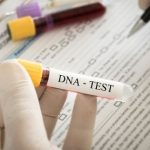In 2009 a new laboratory was opened at the University of Otago it was expected to unlock secrets about the genetic heritage of Pacific people, animals and plants according to scientists and anthropologists.
The ancient DNA laboratory, allows scientists to extract DNA from bones, teeth and plant matter. The DNA will be analyzed using the latest technology, including the university’s $1 million gene sequencing machine which was purchased in 2008. The facility is a joint project between 3 departments.
Ancient DNA did not necessarily mean from antiquity, according to Professor Matisoo-Smith. In scientific terms, ancient means any DNA samples which were not taken from living subjects. Matisoo-Smith did go on to say that some of the samples the laboratory would handle would be thousands of years old.
Already, projects were planned with samples from many parts of New Zealand, several Pacific islands and from Chile.
Representatives of Maori iwi whose ancestors’ DNA will be analysed in the laboratory spoke of their initial reluctance to allow their ancestors’ remains to be analysed because of the intrusiveness of the process. They did however agree to allow the DNA analysis after discussions with Prof Matisoo-Smith and her staff which allayed their fears. Both sides are now hoping the laboratory would provide interesting information on how their ancestors lived, what they ate and what they looked like.
Respecting the remains of people from the past was paramount, said Prof Matisoo-Smith. An ultra-clean environment had to be preserved to ensure ancient DNA samples were not contaminated.
In just a year after opening, an international team of researchers, which includes University of Otago archaeologists Chris Jacomb and Richard Walter, successfully isolated ancient DNA from eggshells of extinct birds.
Previous attempts to recover DNA from fossil eggshell have been unsuccessful. Chris Jacomb said, “this new ability to isolate ancient DNA from moa eggshell opens up exciting new research possibilities not just for palaeobiologists, but also for archaeologists. Indeed, it was this potential to address important questions in New Zealand archaeology that drew Associate Professor Walter and me into this international collaboration.”
Using the DNA from the moa’s provides a powerful new tool in understanding how the demise of moa occurred. “Not only can we now match eggshell to particular moa species, we can develop detailed models of hunting practice by looking at the family relationships of individual birds. This will help us understand hunting and extinction processes.”




